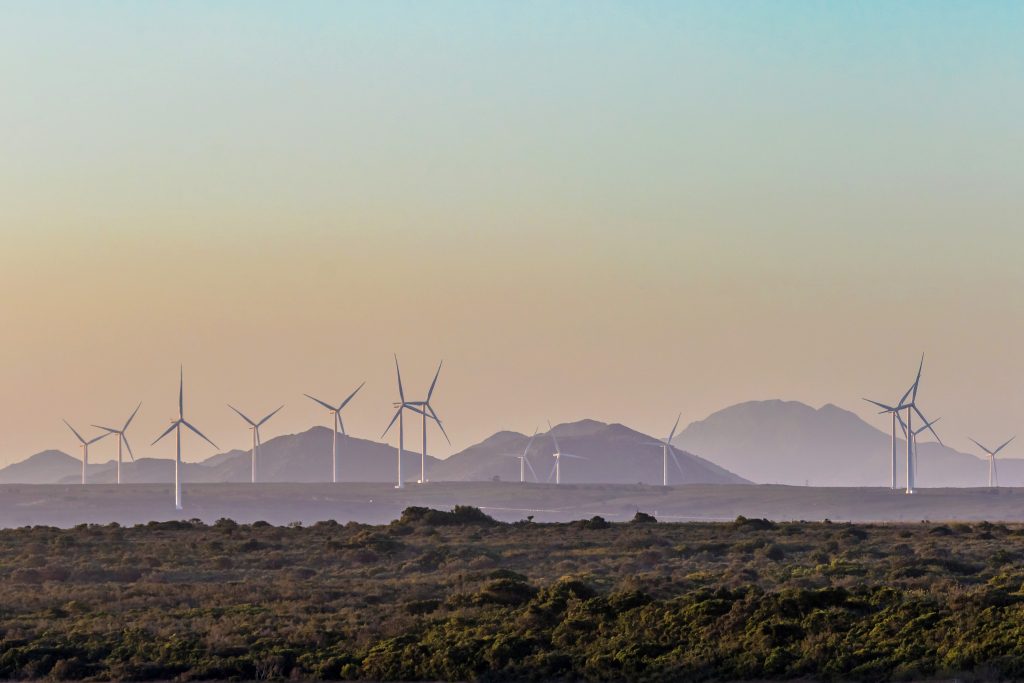Accelerating clean energy deployment in emerging markets
Sebastian Kind is the founder of RELP.NGO, and its CEO and chairman since 2020. He has served as the chairman of the International Renewable Energy Agency (Council 2017–2018), and the under secretary of state for renewable energy in Argentina (2016–2019). This essay is part of the Global Energy Agenda.
Renewable energy resources have the potential to reduce significantly and economically the greenhouse gas emissions from fossil fuel-based electricity generation. They have matured into commercially competitive and technologically advanced sources of clean electricity. The world must rapidly expand renewable capacity to meet the carbon-cutting ambitions mandated internationally by the Paris Agreement. However, achieving mass deployment in emerging markets and developing economies (EMDEs) requires more than technological maturity and competitive pricing.
Statistics from reputable sources illustrate the pivotal role of renewable energy in accelerating the energy transition. In 2022, global investment in the low-carbon energy transition totaled $1.1 trillion, a substantial increase from the $267 billion recorded in 2011. These investments encompassed a wide range of projects, the majority of which were in renewable energy and electrified transport but also included energy storage, hydrogen production, nuclear energy, recycling initiatives, and carbon capture and storage (CCS) projects. In this active investment climate, renewable energy attracted the largest slice of the pie: $495 billion in commitments. Meanwhile, global spending on electric cars exceeded $466 billion in 2022, up 54 percent relative to 2021. Growing electrification highlights that developing renewable energy isn’t solely a means of enhancing sustainability within the power sector, which accounts for less than 25 percent of overall energy consumption, but also of transforming the entire energy landscape

A renewable energy program is not going to solve a country’s macro issues…there is no one-size-fits-all solution.
In the world’s rapid pursuit of a modern clean energy economy, renewable energy capacity expansion from 2022 to 2027 is estimated at 2.4 terawatts, representing over 90 percent of global electricity capacity expansion. This marks an 85 percent acceleration compared to the preceding five years, and is nearly 30 percent higher than the 2021 International Energy Agency report forecasted. This surge is primarily driven by China, the European Union, the United States, and India. Consequently, renewables are poised to become the world’s primary energy source, contributing 40 percent to global electricity generation by early 2025, surpassing coal. It is the only electricity generation source that the International Energy Agency (IEA) expects to grow, while coal, natural gas, nuclear, and oil generation shares are expected to decline.
To foster this growth, countries are employing various frameworks, including targets, renewable portfolio standards, feed-in policies (tariffs and premiums), auctions, tenders, renewable energy certificates, net metering, and other policies that encourage electricity consumers to produce and consume renewable energy onsite. Additionally, fiscal and financial incentives such as grants, rebates, and tax credits play a pivotal role in incentivizing business-development decisions and encouraging consumer behavioral change. It’s worth noting that these mechanisms have facilitated substantial clean electricity project deployment in developed countries, China, and India, but many developing regions lag behind due to more challenging regulatory, legal, and political environments. The challenges these countries face create both actual and perceived risks that deter investors from entering the market.
The renewable energy sector requires substantial upfront capital investment, often provided in foreign currencies that can cause volatility with local currency revenue streams. The cost of electricity from renewable sources is significantly influenced by the consequent cost of capital. EMDEs face inherent weaknesses, contending with higher capital costs, shorter debt tenures, elevated interest rates, and greater equity return requirements. Moreover, access to international capital markets is limited or simply null.
EMDEs interested in surmounting these challenges and enabling a rapid and sustainable expansion of renewable energy must cultivate a favorable environment for long-term international investors. A renewable energy program is not going to solve a country’s macro issues, but it can be sufficiently shielded to generate the necessary investor confidence. This entails establishing clear and comprehensive regulatory frameworks, transparent competitive procurement processes, and effective guarantee schemes. However, there is no one-size-fits-all solution, as countries encounter diverse challenges rooted in political, economic, technical, and institutional barriers, which will make the energy transition happen at different speeds and costs.
Still, EMDEs can take concrete steps to enhance their investment environment. Here are some critical measures.
- Re-evaluate the electricity regulatory framework to identify necessary amendments for the integration of renewable energy.
- Clearly define and identify the public agencies responsible for overseeing different aspects of renewable energy project development.
- Streamline permitting procedures to expedite implementation timelines.
- Conduct a comprehensive risk assessment to identify and quantify the likelihood and potential impact of key risks affecting renewable energy projects.
- Define the renewable energy auction format and prepare the requisite documents and contracts.
- Implement a periodic (annual or biannual) schedule of renewable energy auctions.
- Devise effective de-risking mechanisms to bolster project bankability.
The world must rapidly expand renewable capacity to meet the carbon-cutting ambitions mandated internationally by the Paris Agreement. However, achieving mass deployment…requires more than technological maturity and competitive pricing.
Of all of these factors, project bankability is often the hardest to pin down. A successful de-risking approach to promote clean infrastructure investments should include two essential elements. The first is to design bankable power purchase agreements featuring robust components such as a twenty-year tenure, hard currency payments, protection against certain main country risks, lender step-in rights, investors’ protection termination clauses, and efficient dispute resolution mechanisms. The second is to implement a robust guarantee scheme to mitigate investment risks, foster competition, reduce financing costs, and lower energy prices. Ideally, this scheme should include an energy payment guarantee (liquidity guarantee) to ensure timely offtaker payments and cover any payment delays, along with an early termination guarantee to mitigate political and regulatory risks. This guarantee scheme should be integrated into the procurement program, allowing bidders to price in the offers the de-risking benefits.
Renewable energy resources are technologically and economically advanced and well poised to accelerate the energy transition. However, to supercharge renewable energy deployment in all markets, especially in EMDEs, improved contractual frameworks, regulatory reform, and innovative financial instruments are essential.
All essays
Related program

The Global Energy Center develops and promotes pragmatic and nonpartisan policy solutions designed to advance global energy security, enhance economic opportunity, and accelerate pathways to net-zero emissions.
Image: Wind turbines with a beautiful sunset in the Western Cape, South Africa
